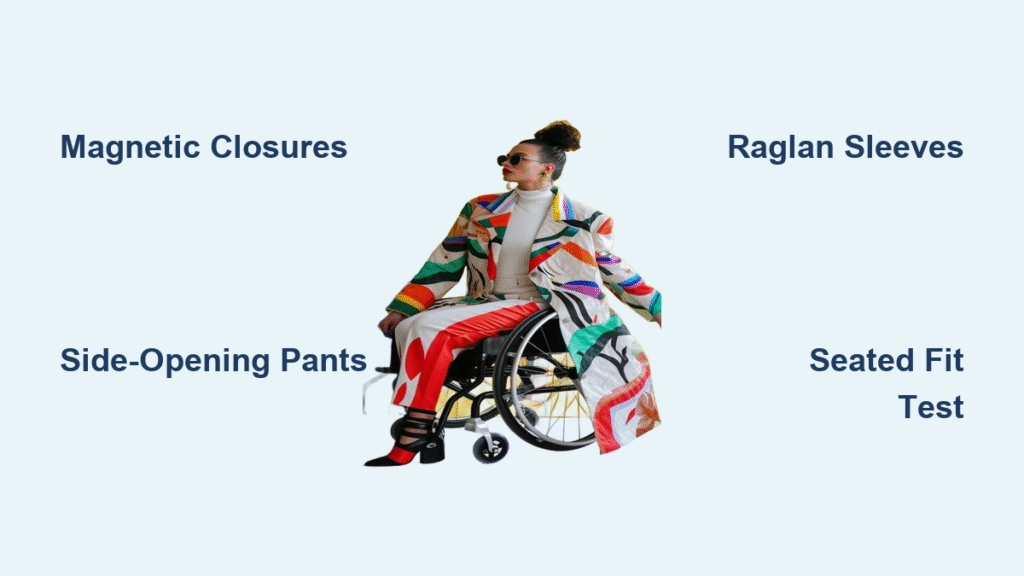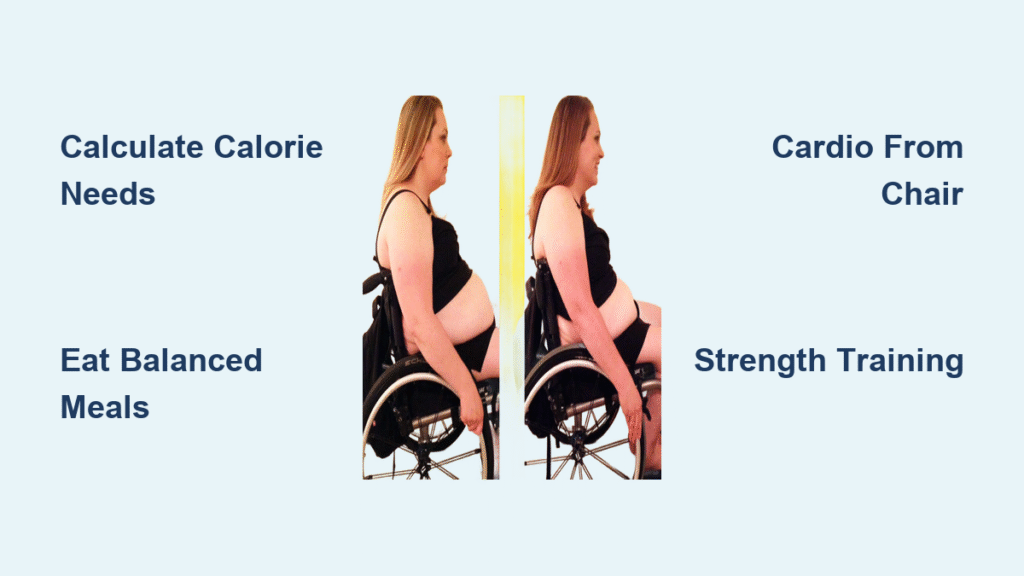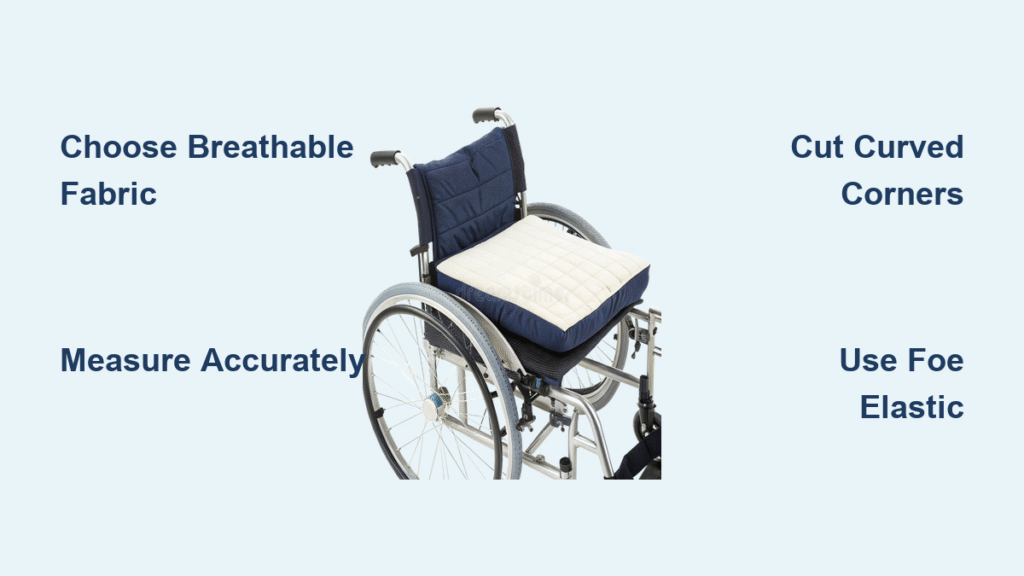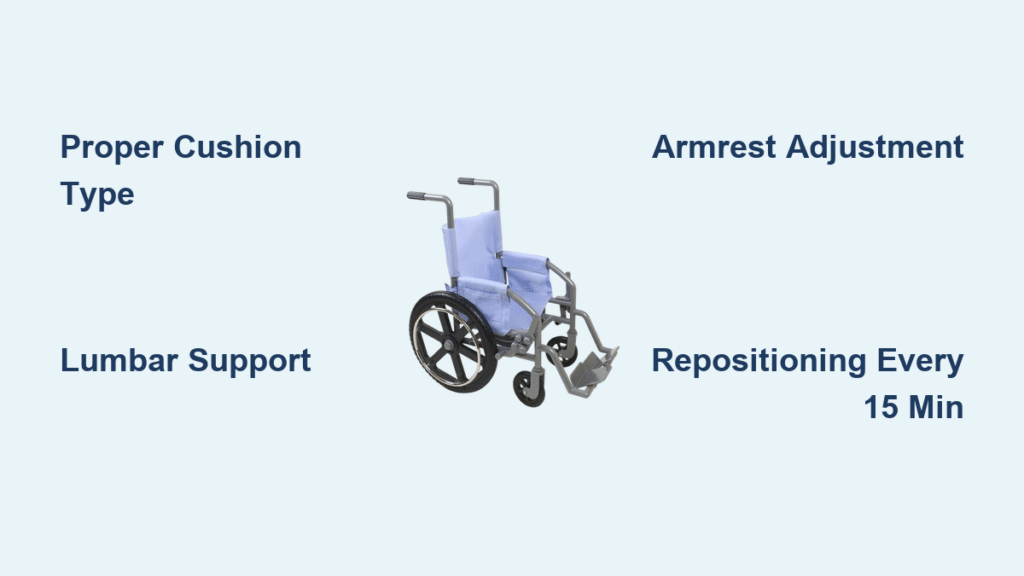Getting dressed shouldn’t be a daily struggle. For wheelchair users and their caregivers, the right clothing choices can transform morning routines from frustrating marathons into manageable tasks. Whether you’re helping a loved one maintain their independence or seeking solutions for yourself, this guide walks you through practical, stylish options that work with—not against—the realities of wheelchair life.
From magnetic closures that eliminate button fumbling to fabrics that prevent painful pressure sores, every recommendation here addresses real challenges faced during 8+ hours of daily sitting. You’ll discover specific brands, exact measurements, and step-by-step techniques that make dressing dignified, efficient, and even enjoyable.
Choose Wheelchair-Compatible Clothing
Wheelchair-specific garments aren’t just regular clothes with stretchy waistbands. They’re engineered solutions that account for the seated body’s unique shape, movement patterns, and pressure points. The key lies in understanding how sitting for extended periods changes everything—from where fabric bunches to how hemlines appear when you’re not standing.
Smart fabric choices prevent 90% of dressing difficulties:
– Medium-weight cotton blends with 2-5% spandex provide structure without stiffness
– Moisture-wicking athletic fabrics combat the heat buildup common in seated positions
– Dark colors hide inevitable wheelchair dirt and stains
– Flat-seam construction eliminates pressure points that cause skin breakdown
The most critical test? If you can’t easily put it on while seated, skip it. This single principle eliminates most problematic clothing from consideration before you even try it on.
Master Upper Body Dressing Techniques

Front-Opening Shirts vs. Pullovers
Pullover shirts create unnecessary struggle. Front-opening designs—whether button-down, zip-up, or magnetic—allow dressing without lifting arms overhead or contorting shoulders. The sweet spot? Hemlines that hit mid-hip when seated, preventing the dreaded back gap that exposes skin to wheelchair hardware.
Essential features to seek:
– Magnetic closures hidden behind decorative buttons
– Raglan sleeves (diagonal seam from collarbone to underarm) for unrestricted wheeling motion
– Extra room across shoulders and chest for propulsion movement
– Longer back length to maintain coverage when leaning forward
One-handed dressing hack: Choose shirts with magnetic or Velcro closures along the front. These enable independent dressing even with limited dexterity in one hand. Simply slide your arms into the sleeves while seated, then secure the front closure without needing to reach behind your back.
Adaptive Tops That Actually Work
Silverts Wheelchair Adaptive Shirt ($35-45): Classic styling with hidden magnetic closures and extended back length. Available in men’s and women’s cuts.
IZ Adaptive Raglan Tees ($28-38): Stretch cotton with longer back hem and seamless shoulders. Side-opening options available.
DIY modification tip: Replace traditional buttons with magnetic closures using sew-in magnetic strips from craft stores. Hide the magnets behind the original buttonholes for a polished look that functions perfectly for wheelchair users.
Solve Lower Body Dressing Challenges
Pants Designed for Sitting
Regular pants fail spectacularly for wheelchair users. The rise is wrong, the back gaps, and seams create pressure sores within hours. Wheelchair-specific pants feature higher back rises (2-4 inches extra) and lower front rises to eliminate lap bulk.
Exact measurements that matter:
– Back rise: Measure from crotch to waist while seated, add 2-3 inches
– Front rise: Measure from crotch to desired waist placement while seated, subtract 1-2 inches from standing measurement
– Inseam: Measure from crotch to ankle bone while seated—typically 2-3 inches shorter than standing inseam
Side-Opening Solutions
Side-opening pants eliminate the need to stand or lift legs high. Full-length zippers or Velcro strips along both outer seams create an opening large enough to slide pants under the user, then secure from seated position.
ABL Denim Side-Zip Jeans ($89-120): Classic denim styling with discrete side zippers extending from waist to ankle. Available in multiple washes and fits.
June Adaptive Side-Opening Pants ($45-65): Business-casual styling with magnetic side closures. Machine washable, wrinkle-resistant fabric.
Pro tip: Look for internal pull loops at waistband and cuffs—these provide grip points for easier dressing without caregiver strain, especially important when dressing someone who has limited mobility.
Select Wheelchair-Flattering Styles
Skirts That Stay Put
Pencil skirts work surprisingly well for wheelchair users when chosen correctly. Opt for high-waisted styles in stretch fabrics that hit right above the knee when seated. The fitted silhouette prevents fabric from tangling in wheels while maintaining a polished appearance.
Length guidelines by style:
– Pencil skirts: Knee-length when seated
– A-line skirts: Slightly above knee to mid-calf
– Wrap skirts: Adjustable fit accommodates body changes throughout day
– Avoid: Pleated styles that lose shape when seated, mini skirts that ride up excessively
Dress Solutions for Every Occasion
Empire waist dresses (raised waistline just below bust) create flattering proportions for seated figures. The higher waist elongates the torso and prevents fabric bunching at the waist. Wrap styles offer adjustability for body fluctuations common with prolonged sitting.
Formal wear adaptations:
– Long gowns: Choose styles with built-in shapewear and side zippers
– Cocktail dresses: Opt for stretch velvet or jersey that won’t wrinkle when seated
– Mother-of-the-bride options: Consider adaptive brands like IZ Adaptive for elegant, functional pieces that maintain dignity during special events
Footwear and Accessories That Work
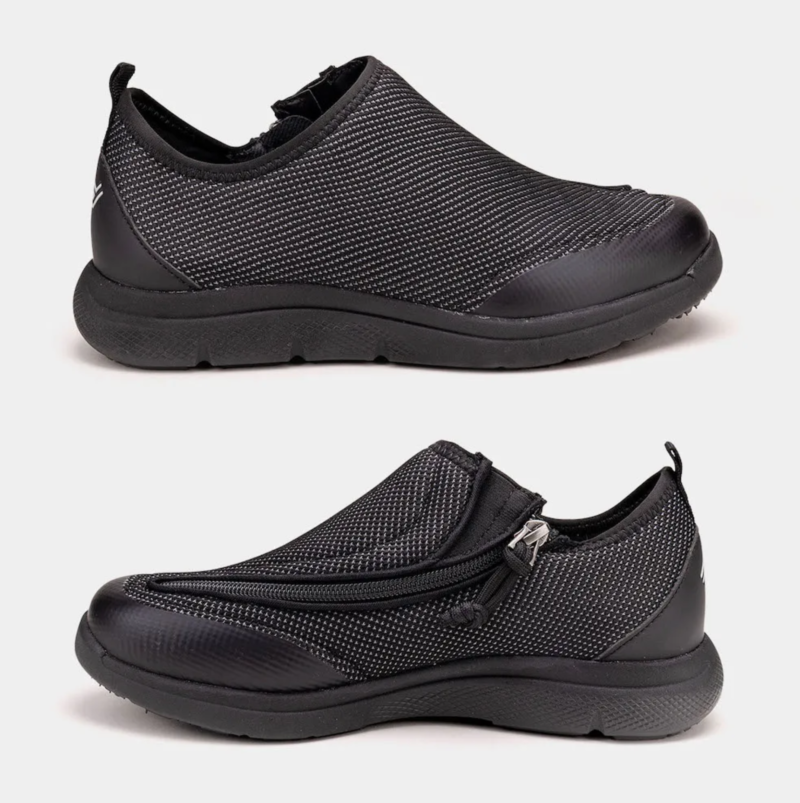
Easy-On Shoe Solutions
Wheelchair users need shoes that slip on easily, accommodate swelling, and provide stability during transfers. Skip laces entirely—Velcro, magnetic, or elastic closures save daily frustration.
Top picks:
– Sketchers Slip-Ons ($50-80): Wide opening, memory foam insoles, non-slip soles
– Nike FlyEase ($90-120): Hands-free entry with wraparound zipper system
– Silverts Extra-Wide Slippers ($25-35): Velcro closures, non-slip soles, machine washable
Swelling solution: Choose shoes ½-1 size larger than standing measurement. Feet swell significantly during prolonged sitting, and tight shoes can restrict circulation, potentially causing serious health issues.
Dressing Techniques for Caregivers
Bed-Based Dressing Protocol
When assisted dressing is necessary, the bed provides the most control and dignity. This method works for complete dressing changes or when the wheelchair user cannot participate actively.
Step-by-step process:
1. Lay out clothes in order on bed: underwear, pants/shirt, socks, shoes
2. Position person on back with knees bent and feet flat
3. Slide pants under legs using rolling technique: roll person side-to-side to position garment
4. Pull pants up using internal loops while supporting legs
5. Apply shirt by rolling person side-to-side to position sleeves
6. Secure fasteners from seated position on bed edge
Time-saving tip: Pre-position all garments before beginning. This reduces rolling and repositioning, making the process more comfortable for everyone involved and cutting dressing time by up to 50%.
Seated Dressing Assistance
When bed transfer isn’t possible, seated dressing requires specific positioning and garment choices. Side-opening clothing becomes essential here.
Key positioning points:
– Wheelchair angle: 45-degree angle to bed or wall provides leverage
– Foot placement: One foot flat on floor, other on footplate for stability
– Upper body support: Use bed or sturdy table for balance during lower body dressing
– Clothing order: Always dress weaker side first, then stronger side
Seasonal Dressing Strategies
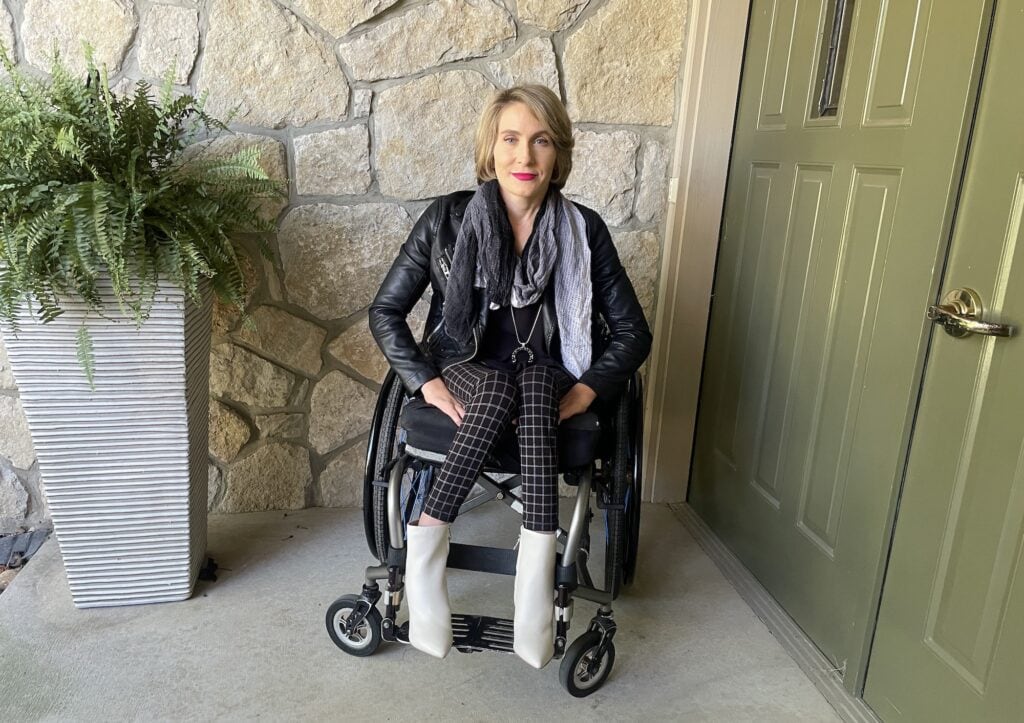
Summer Heat Solutions
Prolonged sitting increases body heat, making fabric choice critical. Moisture-wicking athletic fabrics and loose-weave cottons prevent overheating and skin irritation.
Cool-down strategies:
– Layer lightweight pieces for easy adjustment
– Choose light colors to reflect heat
– Select breathable mesh panels in high-sweat areas
– Consider cooling vests with phase-change cooling packs for extreme heat
Winter Warmth Without Bulk
Layering for wheelchair users requires strategic planning—bulky layers bunch uncomfortably and restrict movement. The key lies in thin, warm layers and wheelchair-compatible outerwear.
Smart layering system:
1. Base layer: Moisture-wicking thermal underwear (thin merino wool or synthetic)
2. Mid layer: Thin fleece or down vest (sleeveless prevents arm restriction)
3. Outer layer: Wheelchair blanket or poncho-style coat designed for seated wear
4. Extremities: Battery-heated gloves and socks for circulation issues
Shop Smart: Where to Find Adaptive Clothing
Specialized Retailers
Silverts (silverts.com): The gold standard for wheelchair-specific clothing. Offers everything from adaptive jeans to formal wear, with detailed sizing guides for seated measurements. Prices range $25-80, frequent sales available.
Zappos Adaptive (zappos.com/adaptive): Curated selection from multiple brands including Nike, Sketchers, and Tommy Hilfiger. Free shipping and returns make sizing experimentation risk-free.
June Adaptive (juneadaptive.com): Stylish basics with hidden adaptive features. Particularly strong in business-casual options for professional settings.
Mainstream Brand Adaptations
When shopping regular retailers, apply these filters:
– Search terms: “pull-on,” “elastic waist,” “front-closure,” “stretch”
– Avoid: Back zippers, small buttons, stiff fabrics, complex closures
– Size up: Choose one size larger for comfort during prolonged sitting
– Try seated: Always test fit while seated—many items feel different than standing try-on
Maintenance and Longevity Tips
Laundry Guidelines
Wheelchair clothing faces unique wear patterns—constant friction against wheelchair parts, ground-level dirt transfer, and pressure-induced fabric stress. Proper care extends garment life significantly.
Essential washing rules:
– Turn garments inside-out to protect external surfaces from friction
– Use lingerie bags for magnetic closures to prevent damage
– Cold water wash preserves elastic and prevents shrinkage
– Air dry stretch fabrics to maintain shape and elasticity
– Pre-treat wheelchair dirt with stain remover before washing
Preventive Care Strategies
Weekly maintenance checklist:
– Check magnetic closures for proper alignment
– Reinforce loose seams with fabric glue or machine stitching
– Rotate frequently-worn items to distribute wear
– Address small repairs immediately to prevent larger issues
– Store hanging (not folded) to prevent permanent seat creases
Your next step: Start with one adaptive piece—a pair of side-opening pants or a magnetic-closure shirt. Test it during your daily routine, then gradually build a wardrobe that works with your life, not against it. Remember, the best adaptive clothing looks and feels like “regular” clothes—with superpowers you only notice when you need them.

